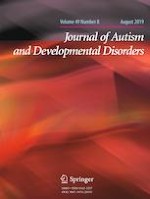27-04-2019 | OriginalPaper
Interventions for Repetitive Behavior in Young Children with Autism: A Survey of Behavioral Practices
Gepubliceerd in: Journal of Autism and Developmental Disorders | Uitgave 8/2019
Log in om toegang te krijgenAbstract
Children with autism spectrum disorder (ASD) display social-communication deficits and present with rigid and repetitive patterns of behavior and/or interests (RRBIs). Compared to interventions for social-communication skills, less attention has been given to RRBIs, especially with regard to interventions for young children. We surveyed 128 behavior analysts who implemented interventions for young children with ASD on their use of 16 practices and one assessment for the treatment of RRBIs. The majority of our sample perceived the practices to be effective in producing sustainable behavior change. Behavior analysts generally responded in the same way to items about reinforcement-based practices, punishment-based practices, and a group of commonly packaged antecedent and consequence-based package components. Implications and future directions are discussed.
